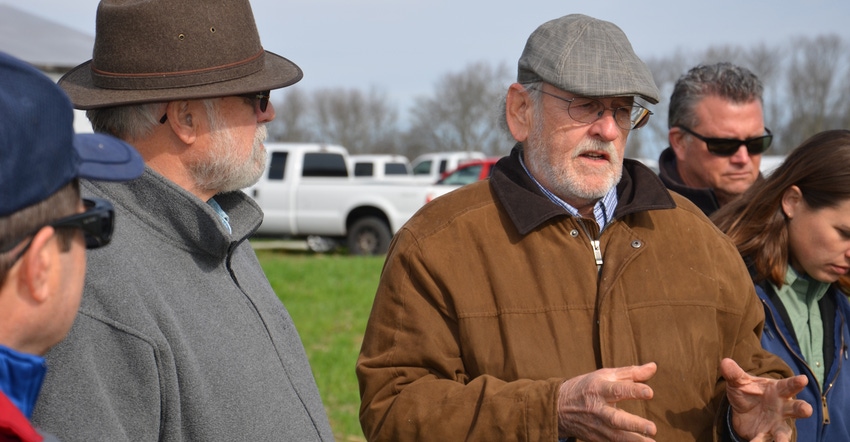
Mark Lawson, Danville, has worn many hats. He was an agronomist, most recently for Syngenta. He farmed the family farm at the same time, and often set up test plots in his own fields to demonstrate various products and practices in action. Now retired, he’s still a supervisor on the Hendricks County Soil and Water Conservation Board. Today, he is also a director representing 10 counties in his area on the board of the Indiana Association of Soil and Water Conservation Districts.
Recently, this man of many hats shared his enthusiasm for soil conservation with Indiana Prairie Farmer.
IPF: Why do you get excited about soil conservation?
Lawson: Recently at a meeting, a supervisor from each of the 10 counties made a report about what was going on in their county. It was exciting to hear about what’s happening in these areas. Many conservation practices are being installed, and many more farmers are trying and including cover crops in their systems. It’s certainly that way in Hendricks County. Some who farm the most acres in the county are using cover crops on at least some acres.
IPF: Do various counties use incentive programs to encourage people to try cover crops and other soil conservation practices?
Lawson: Yes. Some have received Clean Water Indiana grants that allow them to provide cost-share so a farmer who hasn’t used cover crops before can try them. The Clean Water Indiana money is provided by state government. The only problem is that there are typically more requests for help than there is funding. We really need more Clean Water Indiana money to speed up the rate of people adopting cover crops.
IPF: You’ve retired from active farming. Does your tenant use cover crops?
Lawson: Yes. He includes various species, including annual ryegrass. He uses some cereal rye as a cover crop. However, he primarily uses cereal rye where he is going to follow with no-till soybeans.
If he plants corn after a cereal rye cover crop, he adds extra nitrogen to help meet the needs of the corn plants early in the season, before the decaying cereal rye residue breaks down and releases nitrogen the crop can use.
IPF: Have cover crops been successful on your farm?
Lawson: Yes. We have sown lots of acres by aerial seeding the last two years, and have seen good stand establishment and growth. The goal is to seed into standing crops by Sept. 15. In both of the past two seasons, we have received 3 inches of rain in our area within 10 days after seeding. That helps the cover crop get going.
IPF: Is there a downside risk to aerial seeding?
Lawson: My concern is that if we hit a dry fall and there isn’t enough moisture to get the cover crop going, it may be small going into winter once it does come up. I believe it’s important to keep this idea in mind. Try to time aerial applications within a weather window when you expect rain within a few days. The problem, of course, is that the aerial applicator has thousands of acres to fly on, and he can’t accommodate everyone to be there on the perfect day.
About the Author(s)
You May Also Like




